Tibetan Buddhism
- by Caroline
- Last Updated: 2025-03-14
Tibetan Buddhism, commonly known as Lamaism, is the branch of Buddhism introduced into Tibet. It is a form of Buddhism practiced in Tibet, Bhutan and Mongolia. There is also a considerable number of believers in areas surrounding the Himalayas. It is divided into five major sects: Kadampa, Nyingmapa, Kagyupa, Sakyapa and Gelugpa. Here are the instructions for different sects of Tibetan Buddhism.
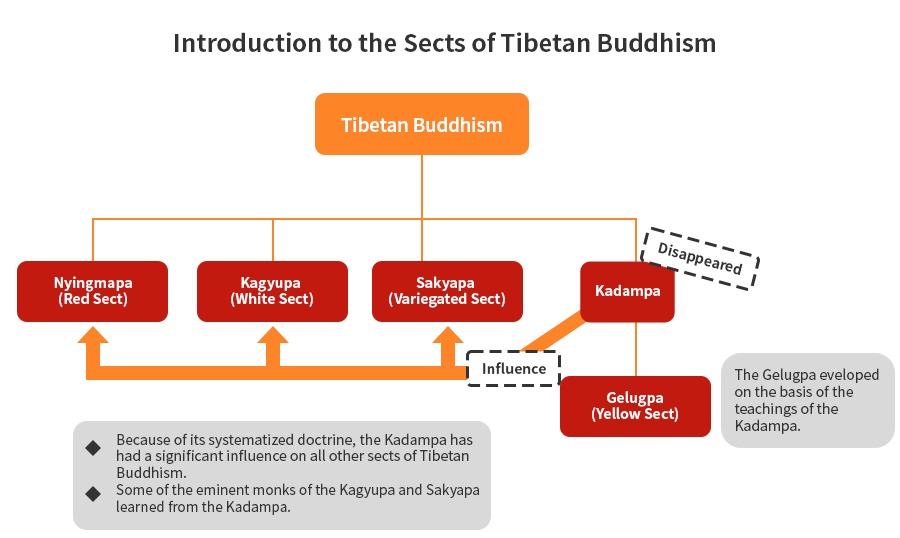
Origin
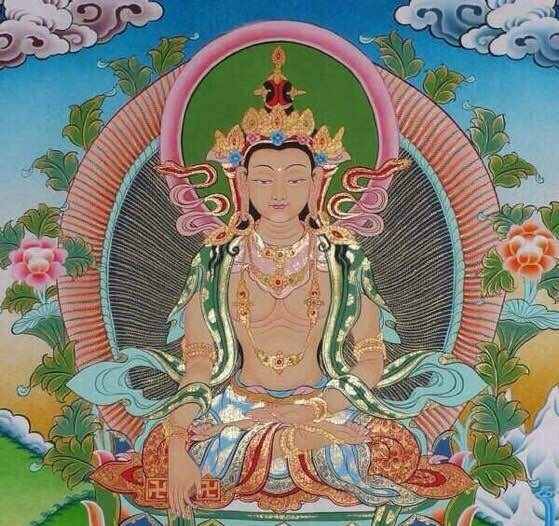 Shenrab Miwo, the founder of Bon.
Shenrab Miwo, the founder of Bon.Tibetan Buddhism belongs to Tantric Buddhism and can be traced back to the ancient Zhang Zhung Kingdom (1500 B.C. - 645 A.D.). Prince Shenrab Miwo created "Yungdrung Bon Buddhism" to take across sentient beings universally. Bon religion ruled the entire Tibet for years until the 7th century.
In the mid-7th century AD, the then Tubo King Songtsen Gampo married Princess Wencheng of the Tang Dynasty and Princess Bhrikuti of Nepal. Both princesses are Buddhist believers. Under their influence, Songtsen Gampo converted to Buddhism and sent ministers to India to study Buddhist scriptures. This marked the official introduction of Buddhism to Tibet and became the official religion of the Tubo Kingdom.
When Buddhism was introduced, it incorporated the essence of Indian Buddhism and Bon Buddhism and formed Tibetan Buddhism gradually.
Development
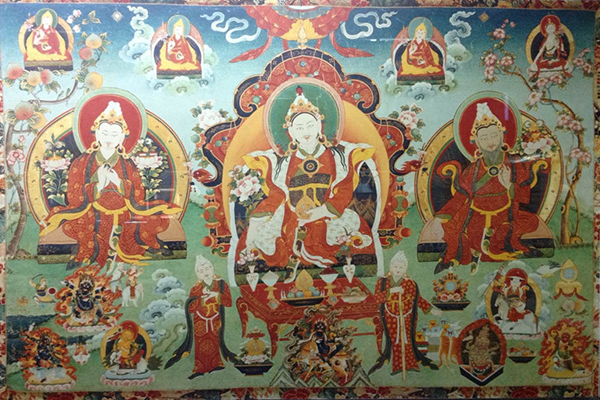 The 3 Kings on murals.
The 3 Kings on murals.The spread of Tibetan Buddhism in Tibet can be divided into the pre-promotion period and the post-promotion period. The dividing line between the two periods is the extermination of Buddhism by Langdarma, the last king of Tubo.
Srongtsen Gampo was the first king in Tibet to enforce people to believe in Buddhism by law. After him, there were two other kings who also made great efforts to protect Buddhism and encourage its development.
One is Trisong Detsen, who invited Indian monks Shantarakshita and Padma Sambhava to teach Buddhism in Tibet. This was a significant event in Tibetan Buddhist history. The famous Samye Monastery was built under the leadership of these two eminent monks. Later, Trisong Detsen invited another 12 Indian monks to tonsure 7 Tibetan young nobles in Samye Monastery. And then, they started to let monks translate the scriptures that were brought from India. Even he allowed monks to embark on political affairs.
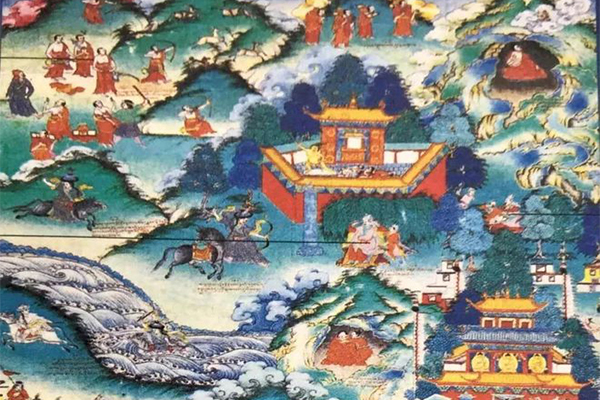 Langdarma suppressed Buddhism.
Langdarma suppressed Buddhism.The other one is Triral Pachen, who respected monks very much and enacted laws that monks were tax-free and no need to work, per 7 lay people need to afford one monk’s life. Buddhism flourished due to the support from the top echelons of society. A lot of monasteries and temples were built during those times, such as Jokhang Temple, Drepung Monastery, etc. and people were proud of being monks or at least practicing Buddhism at home. Believing in Buddhism was justified no matter to the royalty, nobility, or populace.
But then, the last Tibetan King Langdarma started to suppress Buddhism as he thought the power of monks and lamas was out of control. He destroyed the temples and monasteries and forced monks or lamas to resume secular life. It was really dark time for Buddhism in Tibetan history.
Around 100 years after he died, Buddhism was revived but the scale was not as large as before. In the second half of the 10th century, Buddhism was revived with the support of the emerging feudal lord class in Tibet. In 1045, the eminent Indian monk Atisha came to Ü-Tsang to teach the Dharma, and Tibetan Buddhism today marked the official formation from then on. Since then, Buddhism has developed and formed several different denominations. At the beginning of the 15th century, when Gelugpa was set up, Tibetan Buddhism was finally separated into five main denominations among which four exist until now.
Major Sects of Tibetan Buddhism
Kadampa
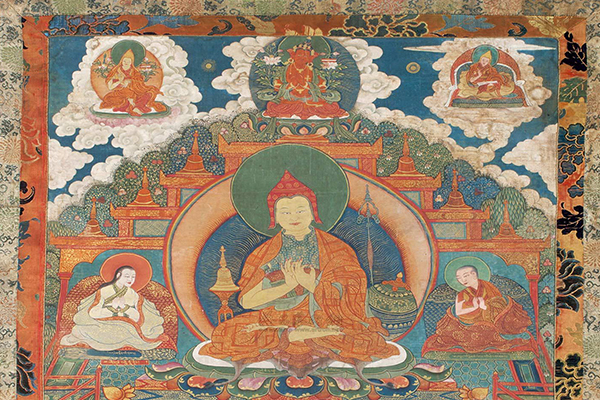 Atisha, the founder of Kadampa.
Atisha, the founder of Kadampa.Founded in 1056. The Tibetan word "Karma" refers to the Buddhist language, and "Dampa" refers to the instruction. The popular saying is to use Buddha's teachings to guide ordinary people to accept Buddhist principles. This sect mainly focuses on practicing exoteric Buddhism first and then esoteric later. The Kadam Sect has a significant influence on other sects of Tibetan Buddhism due to its systematic teachings and standardized practices.
After the rise of the Gelug sect in the 15th century, the Gelug sect developed on the basis of the teachings of the Kadam sect. Therefore, the monasteries that originally belonged to the Kadam sect gradually became monasteries of the Gelug sect. From then on, the Kadam sect disappeared in Tibetan areas.
Its ancestor monastery is Reting Monastery.
Gelugpa (Yellow Sect)
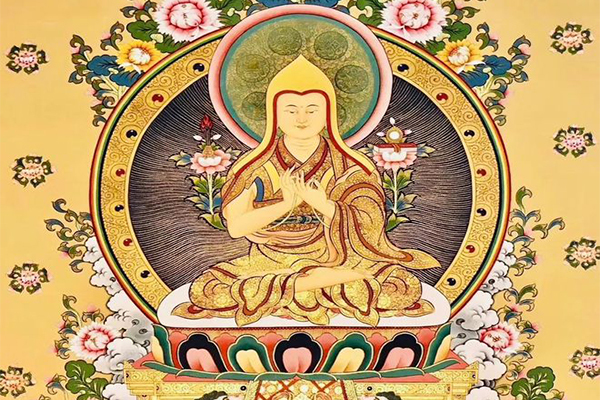 Tsongkhapa, the founder of Gelugpa
Tsongkhapa, the founder of GelugpaGelugpa, which means good law in Tibetan, is the latest sect in Tibetan Buddhism. Founded in 1409, it is a sect formed by the famous religious reformer Tsongkhapa during the process of religious reform. Because this sect wears yellow monk hats, it is also called the Yellow Sect. Although Gelugpa is the youngest sect of Tibetan Buddhism, it’s the largest and most important one. The school emphasizes strict observance of discipline, hence its name. Lamas could not eat meat or drink alcohol and must obey celibacy.
In addition, the Yellow Sect also created the two largest reincarnation systems of the Dalai Lama and the Panchen Lama.
The top six monasteries: Ganden, Drepung, Sera (these three monasteries are located near Lhasa, collectively known as the Great Three Monasteries), Tashilunpo Monastery (Shigatse, Tibet), Taér Monastery (Xining, Qinghai Province), and Labrang Monastery (Xiahe County, Gansu Province).
Nyingmapa (Red Sect)
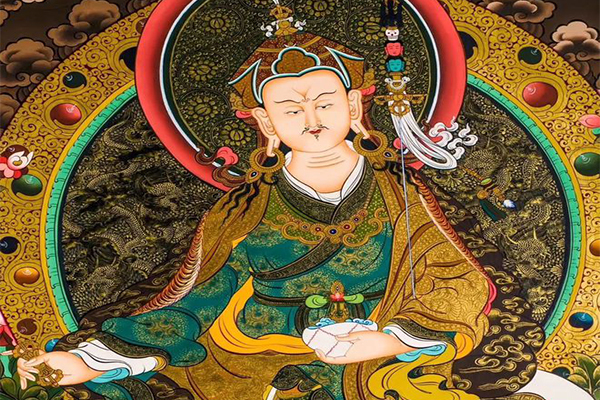 Padmasambhava, the founder of Nyingmapa.
Padmasambhava, the founder of Nyingmapa.Nyingmapa is the oldest and second-largest sect of Tibetan Buddhism, formed in the 11th century. Because its monks all wear red caps, it is also called the red religion. The founder is Guru Padmasambhava, who is honored as “the second Buddha” by the followers. It was changed a little by Longchenpa in the 14th. century.
"Rnying-ma" means "ancient" and "old" in Tibetan. The so-called "ancient" means that its doctrine was passed down from the 8th century AD and has a long history; the so-called "old" means that some of its doctrines are based on the old secret mantra of Tubo in ancient times. The Nyingma School is closely related to the Yungdrung Bon religion inherent in Tibet. From the 8th to 9th centuries AD, Tantra in Buddhism was introduced to Tibet from India and passed on from father to son, from generation to generation. However, Yungdrung Bon's basic religion has a great influence on Tibetan folk. It happens that the mystery of Tantra is very similar to Yungdrung Bon. As a result, the two gradually combine. There are no monasteries for this sect, no organization, no systematic doctrines, and no complete Sangha system. Nyingma monks are not required to be celibate.
The six major monasteries of the Nyingma sect: Minzhuling Monastery (Lhoka, Tibet), Kathok Monastery (Baiyu County, Garze Prefecture), Baiyu Monastery (Baiyu County, Garze Prefecture), Dorje Drak Monastery (Lhoka), Shechen Monastery (Kathmandu), Dzogchen Monastery (Dege County, Garze Prefecture).
Kagyupa (White Sect)
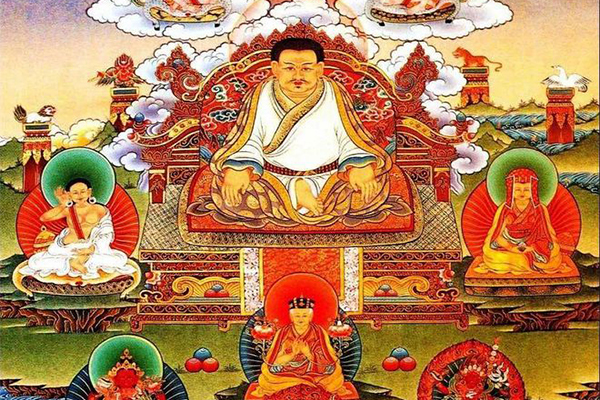 Master Marpa Rozanwa, the founder of Kagyupa.
Master Marpa Rozanwa, the founder of Kagyupa.Kagyu sect developed in the 11th century and attached great importance to the study of Tantric Buddhism. Its founders were khyungpo Rnal Vbyongpa and Marpa Rozanwa. They both went to India to learn a lot of Tantric Dharma, mainly learning "bkav-bab-bzhi ". The monks of the Kagyu Sect have white stripes on their monk robes, also known as the "White Sect".
It’s the third-largest sect. "Bkav-rgyud" is its Tibetan name. "Bkav" means the Buddhist language, and "rgyud" means inheritance. Put together, it means dictation and inheritance. The followers practiced to achieve inner peace, that’s why it was called “the Tibetan Zen” as well.
Main monasteries: Lo Drowo Lung Monastery (Lokha, Tibet), Leiwuqi Monastery (Qamdo, Tibet), Gonggar Monastery (Kangding County, Garze Prefecture)
Sakyapa (Variegated Sect)
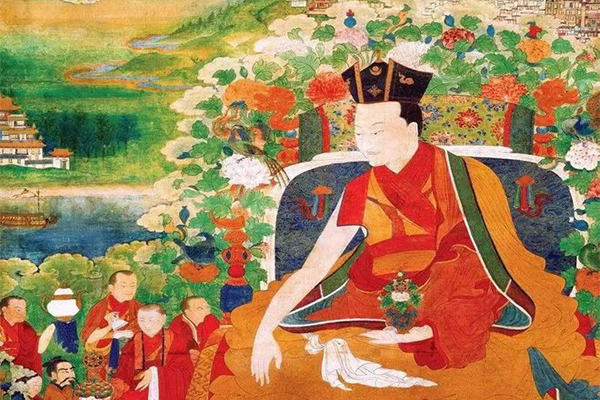 Khon Kongchog Galpo, the founder of Sakya Sect and Sakya Monastery
Khon Kongchog Galpo, the founder of Sakya Sect and Sakya MonasterySakya means gray-white soil in Tibetan. This sect was founded in 1073. Because the walls of the sect's monasteries are painted with red, white and black stripes symbolizing Manjushri, Avalokitesvara and Vajrapani Bodhisattva, it is also called the Variegated Sect.
The leader of the Sakya Sect has been passed down from generation to generation of the Quinlan family. There are two inheritances, blood and dharma. The Sakya sect does not prohibit marrying a wife, but it stipulates that one should not approach women after giving birth to a child. It's the smallest sect of Tibetan Buddhism now.
Famous monasteries: Sakya Monastery (Sakya County, Tibet), Lhagang Monastery (Kangding County, Garze Prefecture)
Related Articles
- Palden Lhamo
- Labrang Monastery
- Samye Monastery
- Major Buddhist Holidays & Festivals of Tibetan Buddhism
- Tibet Geography
- Top Five Main Beliefs of Tibetan Buddhism
- Tibet Airport
- Pelkor Chode Monastery
- Sakya Monastery
- Kumbum Monastery
Email response within 0.5~24 hours.



Typically Asked Questions from Our Clients
Asked by Elli***
My wife is a practicing Tibetan Buddhist. Shes interested is seeing all the important sights. I would like to go to base camp,
We prefer a private tour, staying a traditional accommodations. We are not major hikers but in good physical condition.
7-8 days sometime in the 3rd week in April
Dear Elli***,
We can arrange the Lhasa to Everest Base Camp Private tour with important Tibetan Buddhist sights for you in the 3rd week of April. We can arrange Tibetan accommodations for you.
Asked by Alis***
Greetings, I am interested in the 5 day Tibet tour focused on Tibetan Buddhism. I need to be in Khatmandu on Oct 4, or Oct 5th at the latest. Is it feasible to get to khatmandu from Lhasa without having to fly, and if so what does that look like? Thank you !
Dear Alis****,
Thank you for sending us an inquiry!
If you want to get to Kathmandu from Lhasa without a plane, I suggest you consider the 7-day Lhasa Mt. Everest Kathmandu Overland Private Tour. We can arrange the tour for you on 29 September. Please kindly note, it will take 5 working days to apply for the Tibet Travel Permit along with your China Visa and passport.